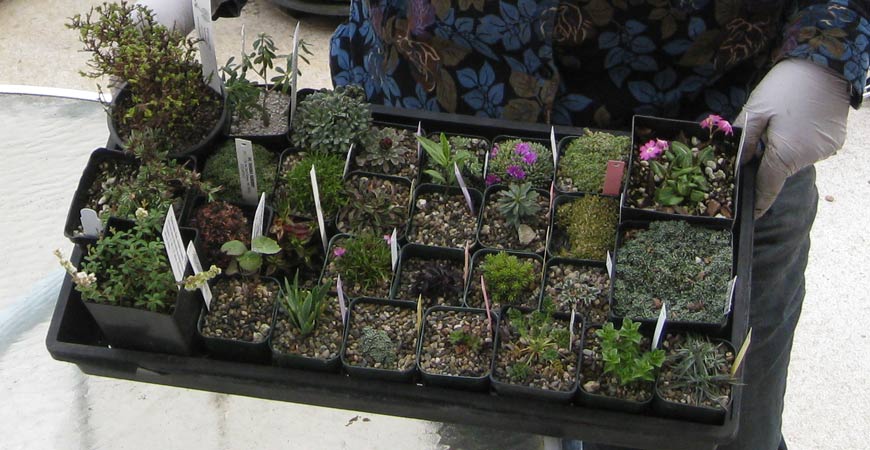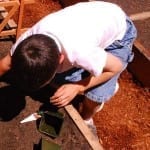
Winter Gardening: Now’s the Time to Get a Jump on Spring Planting
Whether or not your neighborhood is under a blanket of snow, your garden may seem pretty dormant this time of year. But make no mistake: your perennials are preparing to spring forth as soon as the weather warms up. Read on to learn what you can do to help your garden get a jump start on spring planting.
Melissa, a member of our team, was just telling us about the lovely garlic shoots she saw peaking out of the ground after a brief snow melt.
The “dead” of winter is actually the perfect time to prepare for this year’s vegetable and flower gardens and get a head start on spring. Even winter gardens have a job to do!
The US has a wide range of climates, and your January gardening tasks depend on the climate in your neck of the woods. The USDA has mapped out “hardiness zones” as a guide for which plants can grow in each area, and these zones also work well as guides for garden scheduling.
Check out the USDA’s website if you’re unsure which zone you live in, and use these tips from Organic Gardening Magazine to make January a productive month for your garden.
-
Spring Planting for Zone 3
This zone includes parts of Northern Maine, Minnesota, North Dakota, and Montana. For zone 3, January is a good time to organize your seeds, order seeds, and take cuttings from your fruit trees to store in the freezer for April grafting.
-
Zone 4
If you live in zone 4, which includes parts of the upper Midwest, some of upstate New York, and parts of New England, now is a good time to order the seeds for any slow-growing plants such as geraniums or onions in time to start them indoors next month. It’s also an excellent time to draw out your garden plan for spring planting.
Many gardeners skip this step, but a well-arranged garden plan can make all the difference between an OK garden and an awesome one.
-
Spring Planting for Zone 5
Zone 5 includes much of the Midwest, such as northern Illinois and Indiana, Iowa, and the lower half of Wisconsin. If you live in zone 5, take advantage of this time by starting from seed hearty perennials such as snapdragons and pansies.
This is also a good time to check for plants that have “heaved” out of the ground because of the freeze-thaw cycle–Melissa took advantage of a snow melt to check her garlic, which is a frequent victim of “heaving” due to its relatively shallow planting depth. This is also an excellent time to stock up on any potting mix and other supplies you may need for spring planting.
-
Zone 6
Zone 6 covers most of Ohio and parts of Kansas, Missouri, Oregon, Washington State, and Nevada. January in zone 6 is a good time to order new seeds and discard those that are too old.
Under lights indoors, start seeds for snapdragons, pansies, delphiniums, and begonias. At the end of the month, start seeds for leeks, broccoli, cauliflower, onions, and cabbage.
Rake heavy snow off your shrubs, and start mapping your garden for spring planting.
-
Spring Planting for Zone 7
Zone 7 includes parts of Oklahoma, Kentucky, and Tennessee. January is a good time in zone 7 to start pulling up winter weeds such as wild onion, which can sap nutrients from your garden’s soil.
If you’re starting seeds indoors, now is a good time to start seeds for perennials or slow-growing annuals, such as geraniums or coleus. Outdoors, you can start sowing larkspur or Shirley poppies.
-
Zone 8
Zone 8 includes most of California, Texas, the Southeast, and the Pacific Northwest. For zone 8, January is a good time to sow seeds for annual flowers and herbs.
You can also sow radishes, carrots, beets, garden peas, and bok choy into the garden and cover them with a protective layer of dark compost. If you have any root crops still in the ground, protect them with a layer of mulch.
This is also a good time to purchase strawberry plants, fruit trees, and asparagus roots for spring planting.
-
Zone 9
Zone 9 includes parts of southern Georgia, East Texas, and North Florida. January in zone 9 is ideal for sowing seeds indoors for peppers, tomatoes, geraniums, and eggplant, and harvesting radishes, Brussels sprouts, and carrots.
It’s also a good time to prune vines, bushes, and fruit trees.
-
Spring Planting for Zone 10
Zone 10 covers the southern portions of Florida, Louisiana, and Texas. If you live in zone 10, January is the right time to spray bromeliads and roses with compost tea and mulch your peas.
Sow winter squash and pumpkins into the garden and cucumbers and watermelons in pots. Snipping flowers off of young citrus and tropical fruit trees will help them grow and leave you with lovely, fragrant flowers for your home.
Because January is dry in zone 10, be sure to keep your garden well watered.
While you’re outside, spray Wet & Forget Outdoor on outdoor surfaces to get a head start on tackling moss, mold and mildew, algae and lichen.
When the temperature is above freezing and the affected surface is dry and free of snow, apply Wet & Forget Outdoor to your deck, patio, driveway, or other outdoor surface, and let Wet & Forget do the work to start preparing your outdoor areas for summer and fall fun.
Happy winter gardening!
Photo By brewbooks











